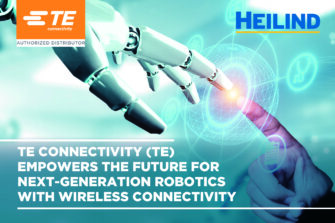Techmezine interacted with Mr Srinivas Kantheti( Product Line Director, Automotive Technology Group, Analog Devices ) about Battery Management System IC for EV & Market growth in India for automotive segment.
Techmezine: Please tell me about ADI?
ADI (Nasdaq: ADI) is a world leader in advanced analog technologies aimed at solving the most difficult challenges in the engineering space. We act as an intelligent bridge between physical and digital technology that understand, convert, power, process, communicate and translate through our work. We enable our customers to interpret the environment around us. ADI is where data is born.
Techmezine: Please tell me about the EV market in India and Global?
The car industry is on the verge of another revolution worldwide. The global drive for a more prosperous electric future is visible today. It is becoming pertinent to be carbon neutral, to use renewables, to reduce operating costs to develop and implement new technology that creates jobs and drives the economies forward. According to various estimates EVs are poised to take around 10% of total car sales by 2025 and upto around 30% of car sales by 2030. This will mean a total of around 125mn electric vehicles on the road by 2030.
As the adoption of electric cars grows rapidly worldwide over the next decade, demand for supporting infrastructure continues to increase. Nearly all regions of the world have renovated their electricity generation and distribution as well as infrastructure capabilities. Almost all car manufacturers are on their path to electrifying their vehicle fleets. India will be no exception; the main drivers of the country’s economy are the top automotive OEM leaders in the 2W and 3W sectors.
Core technologies and goods are being developed for India by domestic leaders such as Mahindra and Tata in the areas of Battery Management Systems. Swappable batteries are a new addition to this ecosystem. With a swappable battery concept, the battery is rented as against an outright purchase. These swappable batteries that are well suited for 2W applications are lightweight making it easier to swap at charging stations. This makes it suitable for 2W applications.
India with all these inventions and developments is at the center of the transformation in the transport industry. The government is also promoting rewards to electric cars buyers, grid charging service providers, etc.
Techmezine: Please discuss about your Battery Management System IC for EV?
The charge condition of a multi-string battery is monitored and carefully managed by battery management (BMS). Exactly monitoring the battery cells and total battery capacity size is important to monitor safety, maximize the available power and estimate the State of Charge and reduce the range anxiety to the customer. The battery management IC performance has a direct effect on the miles an EV can drive, maximizes total battery life and lowers total ownership costs. ADI offers the Battery Management IC with highest accuracy and safety apart from a number of features that reduce the cost of the overall system. Our Battery Management systems also provide the entire signal chain that can monitor current, charge etc. and help estimate State of Charge accurately including SW that enables customers build their systems easily.
ADI also unveiled the first system to monitor the batteries wirelessly called Wireless Battery Management System or (wBMS). WBMS will enable car manufacturers to more efficiently develop their fleets easily with a variety of manufacturing capabilities and quantities through the battery formation, usage and into 2nd life of the battery. The first thing we did last year was to support General Motors to develop WBMS enabled battery-driven vehicles.
Techmezine: Please discuss about Automotive Audio Bus?
Automotive Audio Bus ® (A2B) is a technology developed by ADI to transport digital audio with low latency over long distances in the car. Automotive Audio Bus® (A2B) overcomes the challenge of providing a high-quality audio, while significantly reducing the weight of conventional cable harnesses leading to increased fuel efficiency.
ADI has been supporting leading car makers to build various microphone panels in cars that can serve a variety of applications such as speech recognition, active noise cancellation, and vehicle connectivity. ADI’s A2B transceiver technology not only transports audio data over the twisted pair cable but also transports control signals and power thus reducing the overall system costs while improving the flexibility to the system designers.
Techmezine: Please highlight your popular wireless battery management solution and its technical features?
ADI’s wBMS eliminates:
- Conventional wired cabling, without sacrificing the reliability and precision of the battery management systems
- Savings up to 90% of the cable and up to 15% of the battery volume depending on the mechanicals.
- Increases design stability and production performance.
- Enables maximizing the battery performance through matching of modules and cells more efficiently.
- Reduces the cost of vehicle production significantly
- Improves the serviceability of the battery
- Reduces the costs to redeploy the battery for 2nd life
ADI’s WBMS solution is a complete system solution that encompasses HW, Software, Safety aspects of the solution right from data acquisition through to communication to the BMS controller. This greatly simplifies the system development complexity and enabling OEMs to innovate in their Industrial Designs. ADI BMS due to its precision enables a wide range of cell chemistries, most notable is the LFP due to its cobalt free composition. LFP cells not only are safe from fire hazard but also are environmentally sustainable due to very harsh cobalt mining.
Techmezine: Can you highlight current growth rate and future predictions Of India for automotive segment?
We move from autonomous, manually operated and fossil fuels vehicles to integrated, electric and powered vehicles powered by a wide variety of renewable energies. It’s a sustainable growth. It offers us an excellent chance to reinvent the car and enables innovation in the car that has been only mechanical all these years and promote a greener environment while the car turns smarter at the same time.
Electrifying the vehicle promotes a battery energy revolution. Electrification is also in the vanguard of many automotive safety advances.
In India, the 2W are key transport vehicles and are good target for electrification. The battery sizes are smaller thus keeping the costs under control. It is a unique market needing much more higher levels of integration. The 2W OEMs are not so savvy as the 4W OEMs and hence provides an opportunity for the semiconductor providers to learn their total system and offer better solutions, thereby bringing new technologies into their vehicles.
Similarly, this encourages more start-ups to develop electric 2W in India leading to job creation and fuelling the economy at large.












